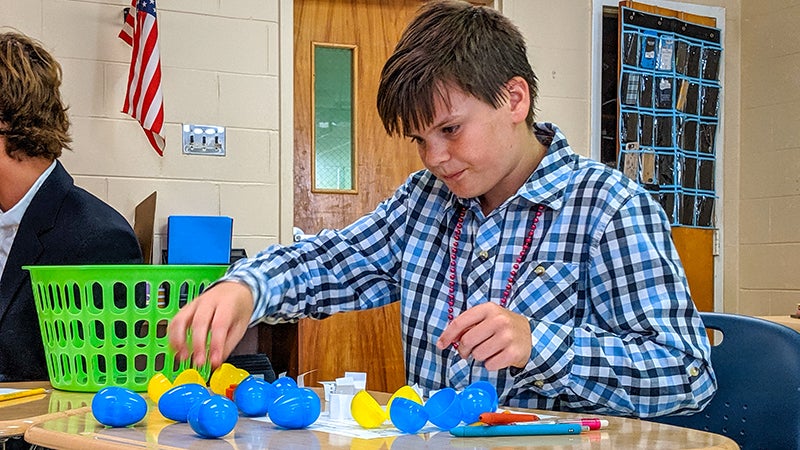Hatching a lesson on ancient civilizations
Published 9:32 pm Monday, September 16, 2019

- Brian Ross looks at his group’s plastic eggs to determine what resources were left inside of them as part of an exercise to understand how past civilizations survived and evolved during a recent ancient world history class at Nansemond-Suffolk Academy.
Pankti Barot wanted to give her freshman ancient world history students a means to understand how past civilizations survived and evolved, so she hatched a plan.
Her students had to search for plastic eggs in front of Nansemond-Suffolk Academy’s Upper School campus that contained inside them the resources — in this case slips of paper with their allotment — key to a civilization’s survival.
“It felt like a real-life version of how they used to have to compete against each other,” said 14-year-old freshman Clare Mitchell.
Once the students returned to their class, they had a brief period to establish the society with the members of their groups before bartering with other groups for necessary resources such as food, water and shelter. Deliberately, Barot set up the teams in different sizes to help illustrate the challenges societies had in forming and living.
“The main objective is the students are learning why early human societies formed, and what geographic placements did for them,” Barot said.
In addition to that, she wanted students to think about what advantages and disadvantages the different sized groups had, whether it would be good to have lived near a water source and whether certain type of shelters would be better than others.
“They’re figuring out what the pros and cons of living in a society are,” Barot said. “They’re intentionally grouped into uneven groups to see whether if that makes a difference.”
During the exercise in one of her classes last Thursday, students found it difficult to barter with other groups because those groups were reluctant to part with their resources.
Liz Shiembob, 14, said that was difficult for her group, but she enjoyed the exercise nonetheless.
“It was fun because we got to move around and get with a new group and work together to figure out the problems that we needed to do to have a successful community,” Shiembob said.
Barot said there was a practical reason to have the students experience the bartering.
“Their motive was to figure out the natural resources because they didn’t have stores back then, trying to live off of the land, and that’s what they essentially had to do,” Barot said. “But when we go to the grocery store, there’s a set amount of quantity available, which is not necessarily the case with the natural environment.”
Jack Butler, 14, said he liked the exercise because of the direct interaction with other students and Barot. He said he got a better understanding of different civilizations as a result.
“This type of activity definitely relates to the real world more than a textbook and paper,” Butler said.
Because there weren’t enough plastic eggs, and with that, resources for the students, it turned into survival of the fittest — not unlike ancient civilizations. At the end of the exercise, Barot sought to connect those ancient civilizations to the way things are in modern cultures.
“There were some groups that did have conflict with each other at those points because they were trying to survive on the same piece of land,” Barot said, “and they were trying to fight for the same resources, and so, just giving them an idea of what it’s like when you’re around multiple groups but fighting for the same resource in order to survive.”






